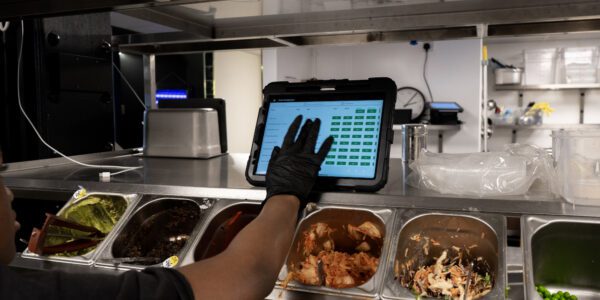Three ways hospitality businesses are boosting efficiency through tech
From tech audits, to productivity tools, to full scale roll-outs of transformative tech, let’s take a look at real life cost-reducing examples of tech in the industry.
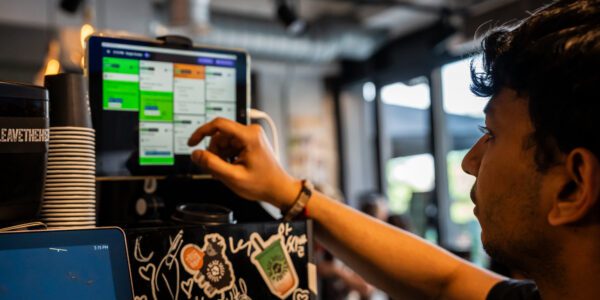
Learn how to use digital menus to increase ATV and reach the full potential of every order, helping you cover those rising labour costs.
Labour has been one of the most significant challenges facing the hospitality industry for several years.
Now, with both the Minimum Wage and the Living Wage having increased in April 2024, the cost of hiring has soared.
As Kate Nicholls – CEO of UKHopitality said at HRC 2024, “We close the door one day, and with nothing else changing, we have £800 million of extra cost going through the sector to absorb the next day.”
Nicholls went on to say, “That’s a heck of a lot of extra main courses, coffees, and pints of beer that we need to be able to serve.”
Whilst this was a tongue-in-cheek comment, besides cutting the amount of people you hire one of the most effective moves to combat skyrocketing labour costs is indeed to make up that difference through revenue.
Join us as we deep-dive into how you can squeeze the most revenue possible out of your digital menu, getting the most potential ATV from every transaction and helping to cover those rising labour costs.
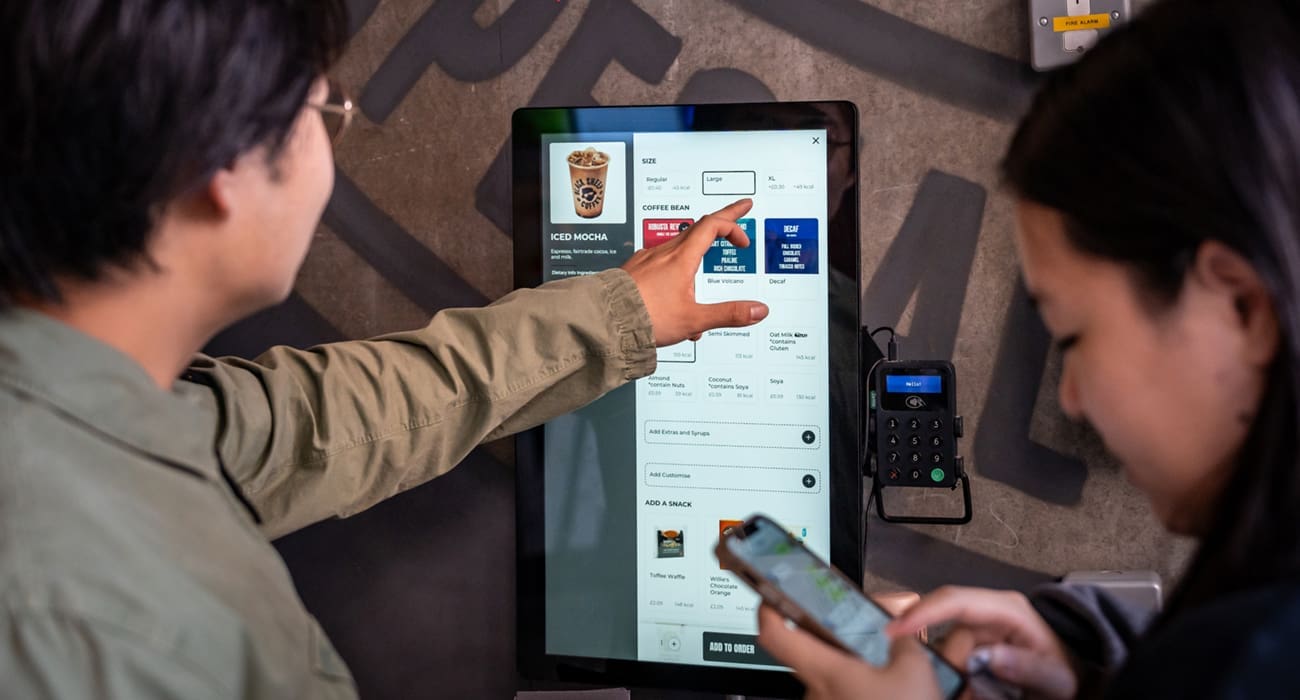
Your digital menu should be working hard to maximise the profit from every single transaction. Through clever upsells, basket recommendations and other tricks, you can boost ATV by as much as 49.5%, which can contribute significantly to covering those increased costs.
But to do this effectively, you have to properly understand how your menu items perform, and which ones bring the most profit.
On-demand: watch now
Discover how ambitious brands are overcoming limited labour resources and building strong teams.
Learn from trailblazers including Tommy Giraux from Honest Burgers and David Ellison from Deep Blue Restaurants.
The first and most important step in getting digital menu design right is to properly analyse your menu items.
Start by calculating how much it costs you to make each item, including ingredients and the cost of production and serving. Use this data with the price you’re charging to work out how much profit that menu item is bringing your business each time it’s sold.
Thanks to your data and reporting tools, identifying the popularity of each dish should be relatively simple. Just identify how much of each item has sold across your operation during a set time—perhaps a month.
Each dish – including sides and extras – should be labelled Low Profit or High Profit, as well as Low Popularity or High Popularity. You’ll then be able to categorise each into one of the four groups below.
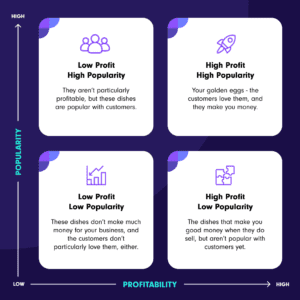
With your menu items categorised with the above labels, you’ll understand which ones make you the most profit when sold, which ones your customers love, and which ones need some attention to make more revenue.
You can now make data-backed changes to your menu that will ensure every transaction is making you the maximum possible revenue. Here are some tips to get started…
Upselling should be one of the main revenue drivers in your menu strategy. It’s a simple but effective way to drive ATV up organically as part of the customer order journey. When you set your menu up to do this automatically, it will be increasing order value much more consistently than a human ever could.
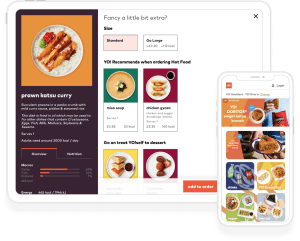
Whether your menu is suggesting a larger size, recommending adding a side dish, or tempting them with a refreshing drink, it will be getting the most potential ATV out of every transaction without being obtrusive.
TOP TIP: Make sure your High Profit and High Popularity items are appearing frequently across upsells to push these crucial menu items.

Having said that, you don’t want your upselling to feel disruptive or overwhelming to the customer. To maximise your upselling potential, limit the number of menu item suggestions to five. Not only will this reduce the amount of scrolling and prevent customers feeling overwhelmed by choice, it will help you promote the items that make you the most profit. It’s a win-win!
TOP TIP: Ease navigation to your profitable bestsellers by placing these at the top of menu and upselling lists, improving customer experience and increasing orders of the dishes that benefit you. Dont waste slots on Low Profit and Low Popularity items.
3. Use basket recommendations
You can replicate the supermarket impulse buy effect with a selection of quick-buy items at basket level. These slots work really well for menu items like drinks, sauces or desserts, tempting the customer to add that little treat at the last minute. Smart digital ordering software will ensure you’re not recommending items similar to what customers already have in their basket.
TOP TIP: Basket recommendations are the perfect opportunity to promote quick-buy items like sweet treats or crisps that might have slipped under the customer’s radar but provide you with a good revenue boost (those High-Profit and Low-Popularity items).
Offering customisation options is a great way to drive order value. Customers are more likely to add extras if they can tailor their own dish. You can increase this even further by positioning your most profitable customisation options at the top of the list, for example, chicken breast for a salad or cheese on a burger.

Introduce meal deal discounts for certain combinations of menu items – for example a burger, fries and a drink. This is a natural way to entice your customers to order items they might not have considered, as well as boosting satisfaction by offering a great deal.
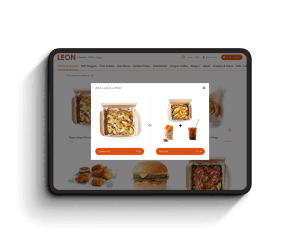
TOP TIP: Meal deal upsells are a great way to make those Low Profit and High Popularity items work better for your bottom line. When these popular items are included in meal deals, make sure you’re suggesting upgrades to more premium items for an extra charge.
With the rising cost of labour taking up so much of your business’ operating budget, you can’t afford to miss out on any revenue that can help make up the difference.
And there are plenty more ways that the right tech can help you increase revenue and save on labour costs, too – even outside of your menu…
Talk to one of our experts about other ways your operation can increase revenue, save on labour, and cover rising costs with a single system.
From tech audits, to productivity tools, to full scale roll-outs of transformative tech, let’s take a look at real life cost-reducing examples of tech in the industry.

What if we view rising labour costs as a catalyst for positive change instead of a threat, asks Stefan Catoui, co-founder of Vita Mojo.
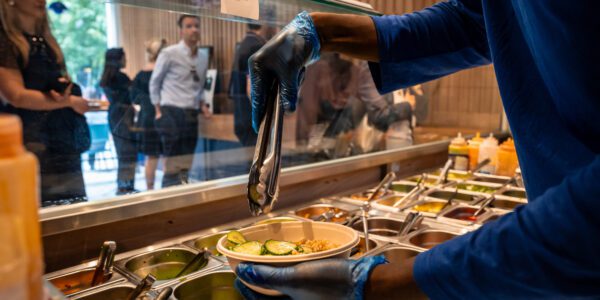
A look at technology’s role in driving efficiency for hospitality operations, and strategies you can implement today to get the most out of your tech.
